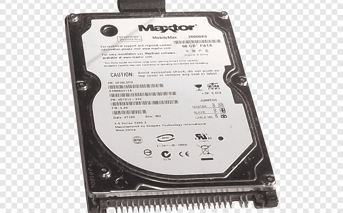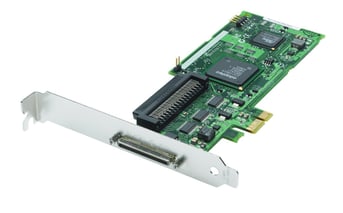Types of hard disk
There are various types of hard disks, each designed for specific use cases, storage needs, and performance requirements. Here’s an overview of the main types:
1. Parallel ATA (PATA) Hard Disk
Description: Also known as IDE (Integrated Drive Electronics), PATA drives use a 40- or 80-pin ribbon cable to connect to the computer’s motherboard.
Speed: Generally slow by today’s standards, with maximum speeds up to 133 MB/s.
Use: Commonly used in older computers; mostly obsolete today, replaced by SATA and SSDs.
2. Serial ATA (SATA) Hard Disk
Description: An improvement over PATA, SATA hard disks use a smaller, more efficient cable for data transfer and support higher speeds.
Speed: SATA III, the latest standard, provides speeds up to 600 MB/s.
Use: Standard in most consumer desktops and laptops; offers a good balance of performance and cost.
3. SCSI Hard Disk (Small Computer System Interface)
Description: Uses a different interface standard, designed for enterprise environments with heavy workloads.
Speed: Generally faster than traditional SATA HDDs, reaching speeds up to 320 MB/s (Ultra-320 SCSI).
Use: Commonly used in servers and workstations that require high performance, reliability, and scalability.
4. SAS Hard Disk (Serial Attached SCSI)
Description: A newer version of SCSI, SAS combines features of both SATA and SCSI, with improved speed and reliability.
Speed: High performance, with speeds up to 1.2 GB/s or higher.
Use: Primarily used in enterprise-grade servers, data centers, and high-demand applications.
5. Solid-State Hybrid Drive (SSHD)
Description: Combines a traditional HDD with a small amount of SSD storage (flash memory) to improve speed. The flash memory stores frequently accessed files for faster loading.
Speed: Faster than HDDs but slower than SSDs, as only frequently used files benefit from SSD speeds.
Use: Ideal for users looking for a balance of large storage capacity and some speed improvement without the higher cost of full SSDs.
6. External Hard Disk
Description: Portable drives that connect to a computer via USB, Thunderbolt, or other interfaces. They are essentially traditional HDDs or SSDs in an external casing.
Speed: Varies depending on whether the drive inside is HDD or SSD, and on the interface (USB 3.0/3.1, Thunderbolt, etc.).
Use: Used for additional storage, data backup, and portability.
7. Network-Attached Storage (NAS) Hard Disk
Description: Hard drives specifically designed for NAS devices, which are dedicated to storing and sharing data over a network. NAS drives are optimized for continuous operation and network access.
Speed: Varies based on the drive type (HDD or SSD) and network speed.
Use: Common in businesses and homes for shared storage, backups, and media servers.
8. Enterprise Hard Disk
Description: High-performance, durable hard disks designed to handle heavy workloads and high reliability requirements. They are typically faster, more resilient to wear, and capable of running 24/7.
Speed: High, with options for SAS or high-speed SATA interfaces.
Use: Used in enterprise environments like data centers, large databases, and applications requiring continuous, high-speed access.
Each type of hard disk caters to specific needs based on performance, reliability, and cost, from consumer use (SATA) to high-demand enterprise applications (SAS and NAS drives).








